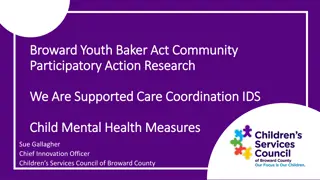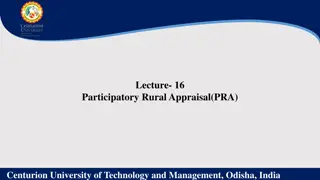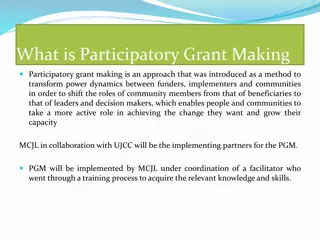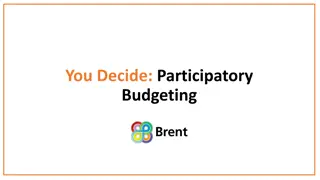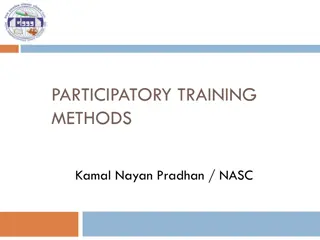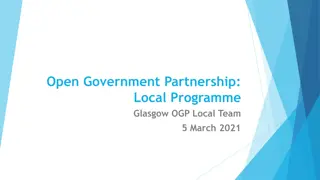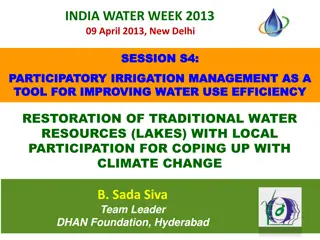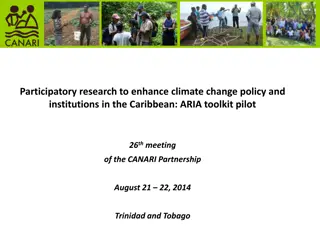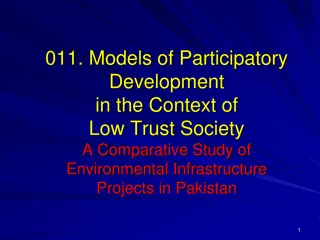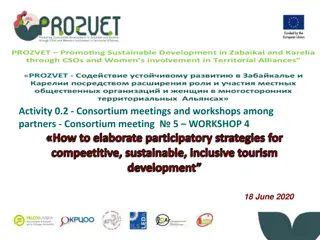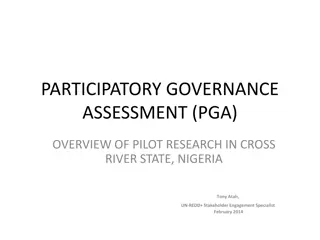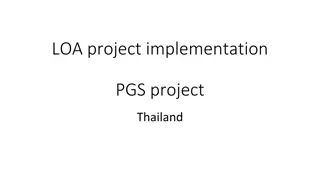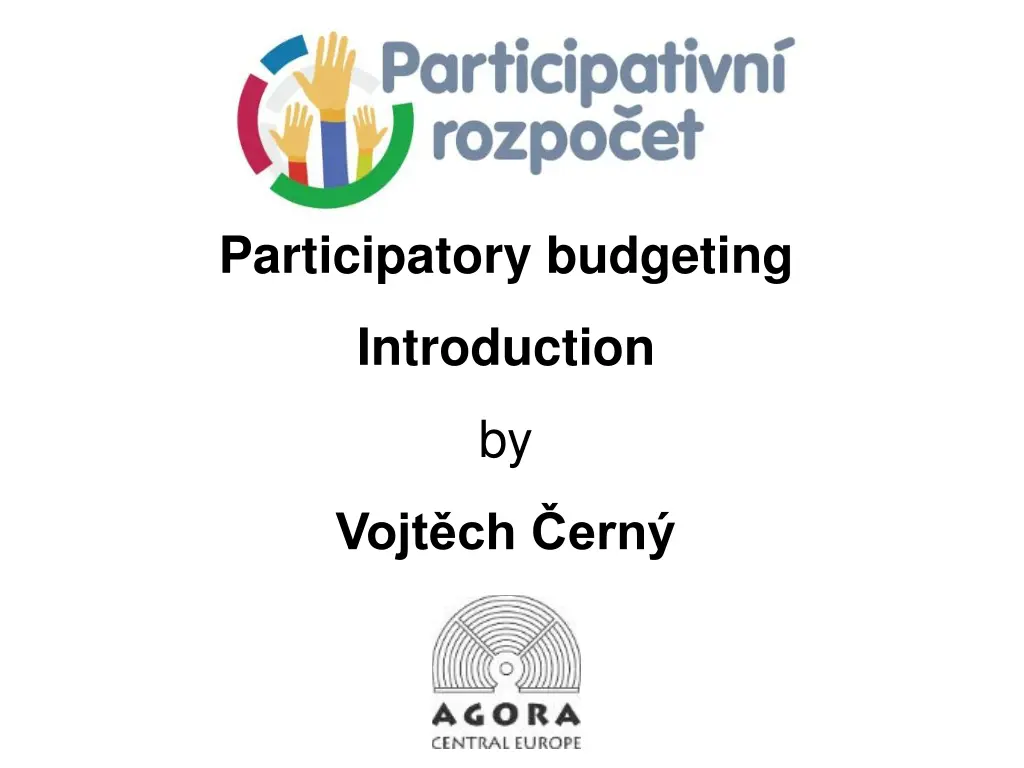
Introduction to Participatory Budgeting
Participatory budgeting (PB) involves non-elected citizens in public finance decision-making processes, requiring discussions, municipal governance involvement, repeated iterations, public deliberation, and accountability. The process includes feasibility analysis, idea collection, evaluation, decision-making, rule setting, and implementation. PB has been implemented globally, with notable instances in Porto Alegre and Latin America. Different models exist for consensus-building, decision-making, and evaluation within the PB framework.
Download Presentation

Please find below an Image/Link to download the presentation.
The content on the website is provided AS IS for your information and personal use only. It may not be sold, licensed, or shared on other websites without obtaining consent from the author. If you encounter any issues during the download, it is possible that the publisher has removed the file from their server.
You are allowed to download the files provided on this website for personal or commercial use, subject to the condition that they are used lawfully. All files are the property of their respective owners.
The content on the website is provided AS IS for your information and personal use only. It may not be sold, licensed, or shared on other websites without obtaining consent from the author.
E N D
Presentation Transcript
Participatory budgeting Introduction by Vojt ch ern
What is participatory budged? PB allows the participation of non-elected citizens in the conception and/or allocation of public finances: 1) Discussion of financial/budgetary processes; 2) Municipality with an elected body and some power over administration and resources (the neighbourhood level is not enough); 3) It has to be a repeated process over years; 4) Some forms of public deliberation must be included within the framework of specific meetings/forums; 5) Some accountability on the results of the process is required. (Sintomer et al 2008)
The process of PB Feasibility analysis Collecting ideas/needs from citizens Evaluation of the PB proces and implemetnation Decission on priorities Municipality decide about rules and procedure Discussionon and deliberation Preparatory phase 2 6 months implementation Participatory budgeting 6 -12 months
Participatiry budgets in the world 1989 the cradle of PB Porto Alegre 90 s Latin America Brasil, Uruguay, Argentina, Ecuador, Peru After 2000 over 1269 municipalities globaly in 2010 (Sintomer et al,2010)
Model Consensus building Cooperation of citizens Porto Alegre Public consultation Joint work on PB Citizens as consultans Decission making in hands of public authorities Citizens as decission-makers Decission making in hand of citizens Collecting of ideas of citizens Competition of ideas creating PB Czech Competetivness Citizens support particlar parts of PB according their own preferences.
Decission of the authorities Evaluation, preparation of the next round Pooling the ideas PB proces in Czech Decission making - voting Feasibility analysis
Plan of investments and services Rules of PB Analysis of demads, education of participatory council Neigborhood gatherings PB proces in Porto Alegre Regional (17) and thematic gatherings City budges Council Regional and thematic Forum
Benefits of PB 1. It seeks not only problems but generates also solutions. 2. Educate and mobilize citizens. 3. Creates trust between public and authorities 4. Teach the public officers to get in touch with citizens 5. Creates the relationship of people with the place they live. 6. Opens dialog about the priorities and needs of people community .
Basic condition of successful PB 1. Political support for the whole procedure 2. Clear rules and design of the process of citizen involvement. 3. Good information campaign 4. Capacity of the town hall for participation and expert work on projects. 5. Interest of public to take a part in the process 6. Link the PB with other projects, program and processes in the municipality (strategic and financial planning)
Thank you for your attention Vojt ch ern , vojtech.cerny@agora-ce.cz www.participativni-rozpocet.cz facebook.com/participativnirozpocet Agora Central Europe Petra Rezka 12 140 00 Praha 4 www.agora-ce.cz



